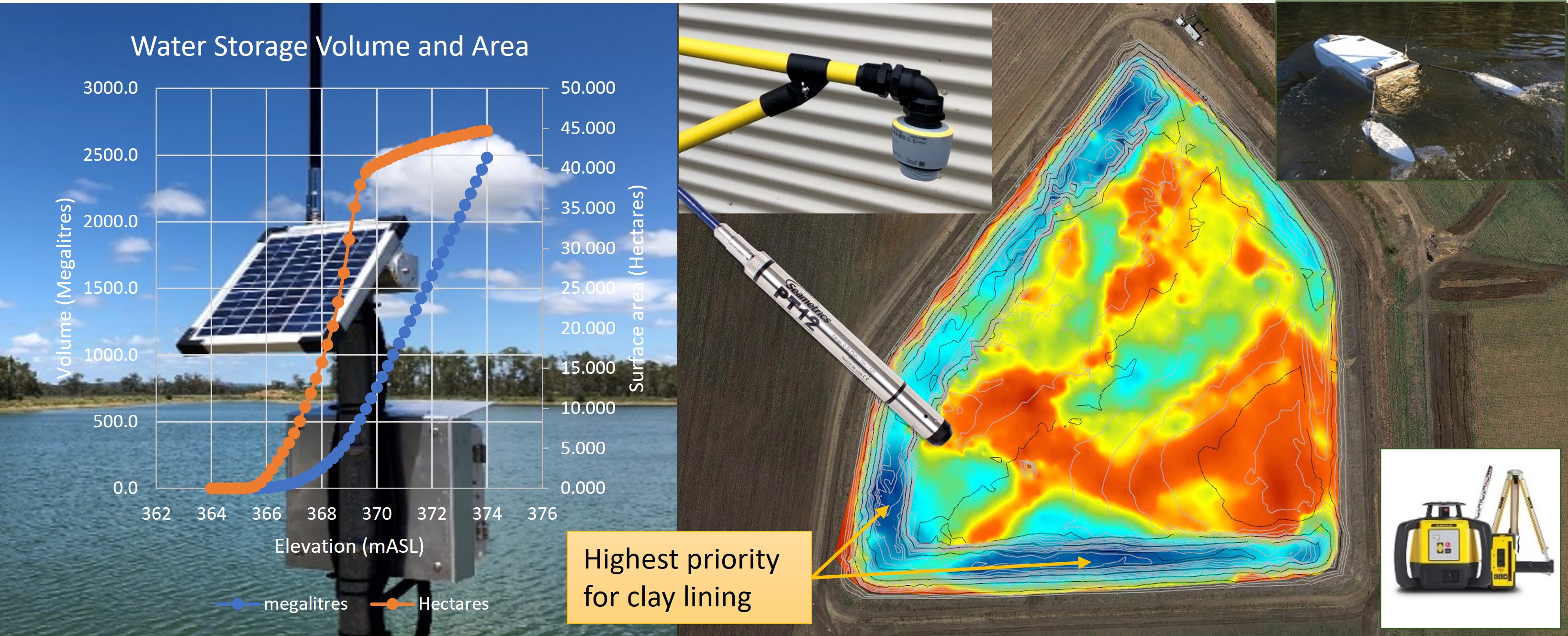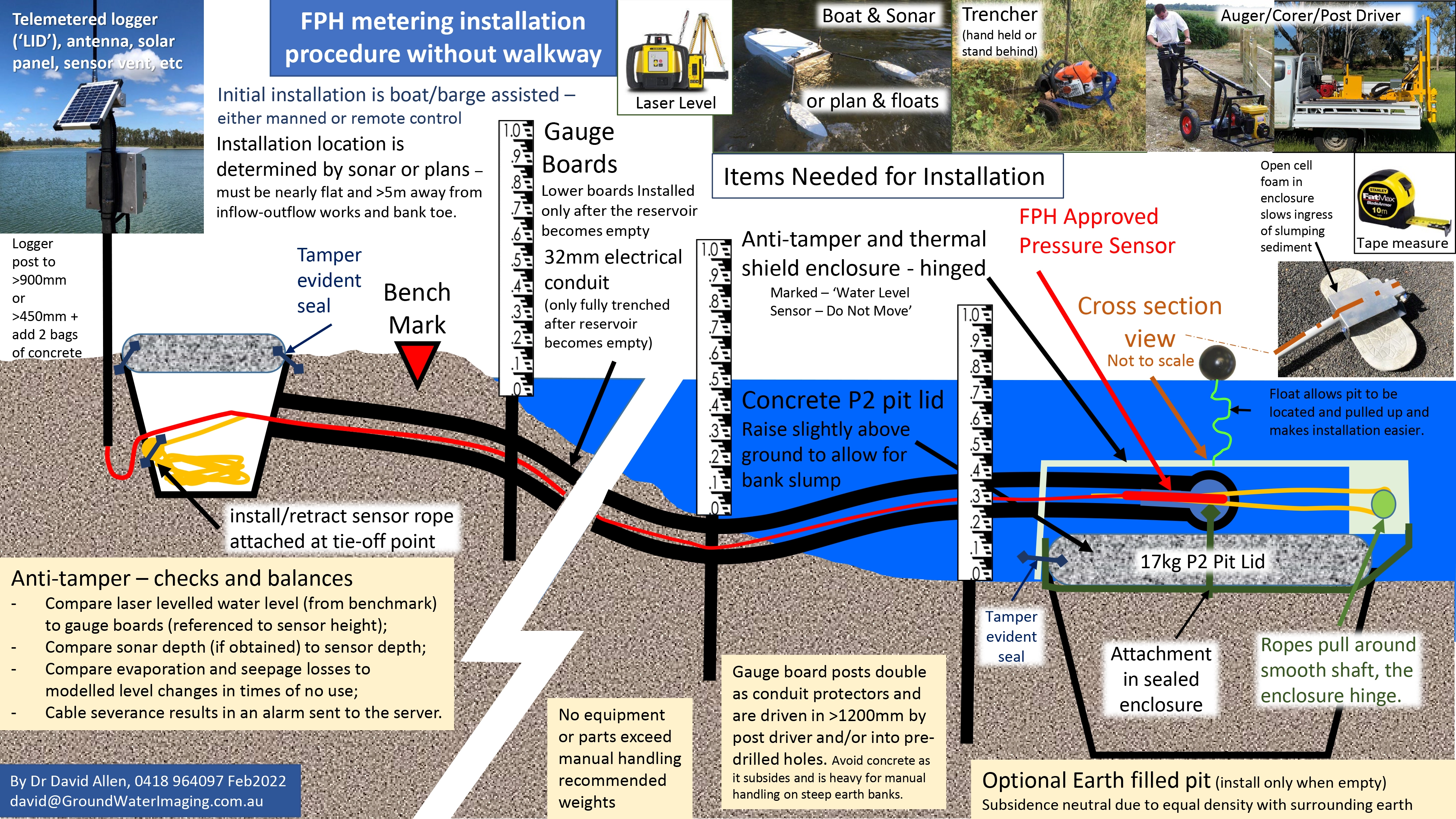NSW Floodplain Harvesting Metering

Basic FPH Meter installation service:
NSW FPH Metering, like the NSW non-urban metering, is a legal requirement. It is now compulsory for irrigators with FPH licences to install measurement equipment to ensure their floodplain take remains within licenced limits.
Irrigators are required to measure and report this take in line with conditions on their water supply works approval. This requires the installation and certification of metering equipment in line with the NSW floodplain harvesting measurement framework.The Natural Resource Access Regulator (NRAR) is responsible for enforcing the FPH rules and fines may apply for non-compliance or delays.
Dr David Allen and James Ohanga are certified water storage meter installers and validators (CSVs) and can help you meet your FPH metering requirements. Our partnerships with other installers can make the job easier for you, especially in locations far from our Dubbo and Adelaide bases.
Works captured by the FPH rules need to be fitted with an approved level measurement sensor and an approved telemetry-capable data logger (a Local Intelligence Device or ‘LID’). Data is securely transmitted to the department through a cloud-based IoT platform or 'Data Acquisition Service' ('DAS' - not to be confused with the normal meaning of DAS in electronics).We have installation methods approved for storages with walkways, where Vega radar sensors are installed, and storages without walkways, where pressure transducers are installed. Our pressure transducer installation method for reservoirs without walkways is described in the graphics below:
Our primary meters will use a TOIP Logger/Modem – what NSW Water call a ‘LID’ : ML417M1 Floodplain Harvesting LID https://www.toip.net.au/Applications/FPH/fph.html
Gauge Boards:
Irrigators must install primary meters. They can install an optional secondary metering device which acts as your back-up system and will allow them to floodplain harvest if their primary metering equipment is faulty. This means they can continue to legally floodplain harvest if their primary device fails during an FPH event.
The secondary meter can be like the primary, however, in all cases, we recommend making gauge boards the secondary meter. Gauge boards will not fail:
- when technical assistance is not available in an emergency,
- the internet is down, or
- when passwords and usernames get forgotten.
For storages with water, we can often start the installation, and get the top surveyed, leaving lower parts for finishing when the water recedes.
Enhanced FPH Meter installation:
Because the primary FPH meter transmits data to the government, it must meet high security requirements which restricts functionality. Secondary meters are not as restricted. They can send real time data to a water user's private cloud system, including timely water volume data as well as access to water volume plus, with enhancements, evaporation and seepage loss data in mm/day or megalitres per day. Real time access gives irrigators control over pumping so that allocations are not exceeded. It can also be used to meter water going to crops or to measure return water recovered. Suggestions are given in Flood Plain Harvesting Sensor Information In Water Schematic document
Suggested enhancement - NSW FPH metering with added reservoir seepage and evaporation loss measurement
Secondary NSW Floodplain Harvesting Metering installations can be augmented with additional sensors and data streams to provide farmers with seepage information useful for seeking a seepage right. Irrigators will need to seek their own legal advise on viability of seeking such rights.
The federal On Farm Connectivity Program may provide a rebate on the following parts of installations:
(January 2024 pricing WITH the OFCP 50% rebate. Prices will change in May 2024. Without the rebates and with taxes, prices will be at least double what is quoted.):
| FPH RunTimeUnit | $1100.00 |
| Vega Depth sensor | $747.50 |
| Exel mount for Vega sensor | $300.00 |
Installation and mobilization costs vary but can be claimed on the OFCP at up to 50% of capital item costs (pricing includes rebate):
| Posts and Brackets | $75.00 |
The OFCP requires a minimum spend per claim. Weather sensors needed to bring cost up to above minimum claimable rebate are suggested – these will facilitate calculation of evaporation and by water balance, seepage + unaccounted losses.
| Rain gauge | $200.00 |
| Air Temp Rel. Humidity | $50.00 |
| Radiation screen | $95.00 |
| Pyranometer | $750.00 |
Costs not covered by the rebate may include:
- Hosting of data on a separate server to the one provided by government
- Initial setup of RTU
- SIM card costs
- For the required secondary metering we recommend gauge boards as they do not fail when technical expertise is no longer available and since these are not digitally connected, they are not covered in the OFCP. Secondary metering can also be a second Run Time Unit and Vega sensor – and if permission to send a second data stream from extra sensors managed by the primary RTU is never granted by WaterNSW this will be required to get the rebate.
- Government administration costs – these can be high
- Pre-installation approvals process
- Ongoing consultation on calculation of and verification of evaporation and seepage losses
- Survey costs – benchmarking, bathymetry, any seepage investigation done with survey.

